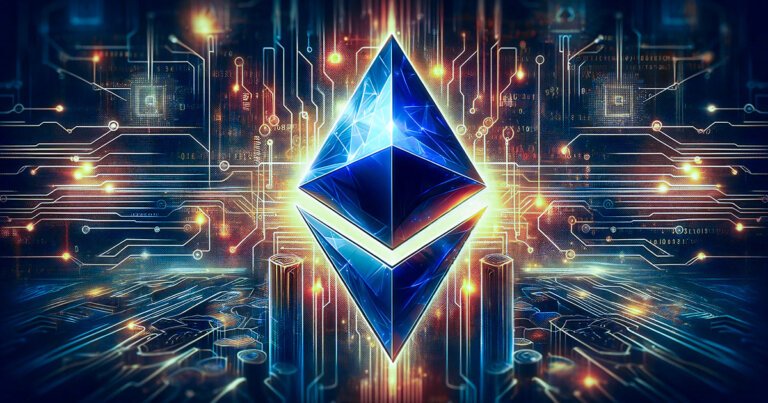 Ethereum developers set roadmap for an eventful 2024
Ethereum developers set roadmap for an eventful 2024 Ethereum developers set roadmap for an eventful 2024
Developers anticipate several important upgrades over the next year, including forking the Goerli testnet and activating the Dencun upgrade.

Cover art/illustration via CryptoSlate. Image includes combined content which may include AI-generated content.
Ethereum (ETH) developers have outlined a comprehensive plan for the network’s development in 2024, including significant upgrades and new proposals after their latest execution layer meeting on Dec. 8.
A key focus is on the deprecation of the Goerli testnet, with a fork scheduled for early 2024. This move is part of the strategy to activate ‘Dencun’ on the Ethereum network in January, marking a significant advancement in its technological capabilities.
Dencun Activation
The Dencun upgrade will introduce a novel concept in transaction processing termed ‘blob-carrying transactions.’ In this context, ‘blobs’ is an acronym for ‘Binary Large Objects’. The primary purpose of these blobs is to refine the way Ethereum stores and retrieves data by reducing the amount of data that must be stored indefinitely on the Ethereum blockchain.
Consequently, the transaction costs associated with data storage are expected to decrease, making overall transactions more economical. It is a critical step toward the long-term goal of danksharding, a planned scaling solution that breaks the network into smaller, parallel segments (shards) to increase capacity and efficiency.
Another notable development is the introduction of a new proposal aimed at enhancing the power of Execution Layer (EL) clients. The proposal, designed to counteract potential censorship in the mempool, would enable EL clients to override local builders using various heuristics.
For instance, clients could override when detecting transactions with excessively high fees pending for extended periods. However, adopting such heuristics has not yet been implemented broadly, with only Geth currently having an open pull request on the issue.
In terms of process updates, the development of a Meta Ethereum Improvement Proposal (EIP) for Dencun has been a significant milestone. This is complemented by a draft for a “Meta EIP backfill,” which aims to provide specifications for upgrades previously lacking Meta EIPs.
The discussion around Meta EIPs has been vital in simplifying access to fork specifications, although there is an ongoing conversation about their role and naming conventions, according to ETH developer Tim Beiko.
Prague/Electra upgrade
Looking forward, the Ethereum community is preparing for the Prague/Electra network upgrade. Among the proposals for this upgrade is EIP-6110, which proposes a new method for supplying validator deposits on-chain, replacing the older Eth1 bridge system.
Future upgrades may also include Verkle Tries on the Execution Layer and Data Availability Sampling (DAS) on the Consensus Layer, necessitating in-depth technical reviews and discussions.
The Ethereum community is encouraged to take an active role in shaping the future of the network by participating in these technical discussions and expressing their preferences for potential features in the upcoming upgrades through forums and GitHub threads.
Client teams are set to review these proposals, with more detailed discussions planned for January. This planning forms part of the broader strategic development of the Ethereum network, reflecting the continuous efforts by the developer community to evolve and refine the platform.
The Ethereum developer community remains actively engaged in enhancing the network’s capabilities, with a clear roadmap set for 2024. The upcoming developments and proposals highlight the network’s ongoing commitment to innovation and responsiveness to community feedback.



 CryptoQuant
CryptoQuant 
 CoinGlass
CoinGlass 
 Blockchain.com
Blockchain.com 
 Farside Investors
Farside Investors 
























































































